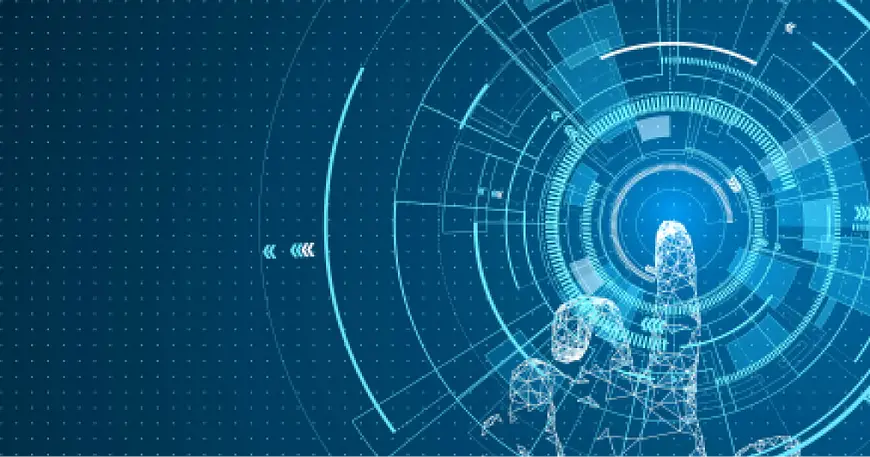If you’re a smartphone user, you might already be well aware of how valuable techniques like fingerprint or facial recognition can be in protecting your mobile phones from unauthorised access.
Since biometric data is unique to each individual, the biometric cybersecurity methodology provides a satisfactory and reliable confidence level. Computers, with the help of advanced sensors, can quickly store data about the physical characteristics of a person. This data will later be used to match the person’s features to the identity of the said person in order to decide whether they should be allowed access or not. This method is incredibly user-friendly. The user doesn’t have to go through a cybersecurity course first to understand how biometric security works. The technique requires most of the work to be done by computers. The user in most cases, just has to stand in front of a machine for the inputs to be taken.
The biometrics market is rapidly growing today. As per Statista, the global biometric technologies market was estimated to amount to about 19.08 billion U.S. dollars in 2020 and is forecast to reach 55.42 billion U.S. dollars by 2027.
According to a survey by Ping Identity, an astonishing 92% of the enterprises surveyed agree that biometric access control is an effective or very effective way to secure on-premise data or I.T. assets, and 86% think it is also effective in securing data stored in public clouds.
What is Identity Theft?
First things first, identity theft is when information that personally identifies you is stolen and used to further illegal objectives without your awareness or permission. Identity theft is a broad term and consists of several types of crimes: Medical Identity Theft, Criminal Identity Theft, Financial Identity Theft, Identity Cloning & Concealment, Tax Identity Theft, Account Takeover Fraud and Debit Card or Credit Card Fraud, among others. Each of these identity theft crimes have significant potential to cause drastic financial losses to individuals and organisations.
As per the 2020 Identity Fraud Report by Javelin Strategy & Research, one of the top comprehensive analysts of identity fraud, more than 5% of consumers in 2019 were victims of identity theft for almost $17 million in damages, this is an increase of over $2 million from the previous year. There are many ways for you to fall prey to identity theft, such as Card Skimming, Wi-Fi Hacking, Phishing and Spam Attacks, Malware Activity and Mail Theft, among others.
How to Prevent Identity Theft?
Although identity theft is a growing concern, there are many ways you can ensure you and your data stay safe:
1) Choose passwords that can’t be easily guessed and update them regularly. This can be achieved by including special characters and numbers alongside letters. You can also substitute numbers for words or letters, for instance, using “1” for a small “L” or “3” for “E”. Also, keep in mind to never make a master file that keeps all your important passwords in one place.
2) Be aware and alert when using public Wi-Fi and never share personal or personally-identifying information.
3) Keep crucial financial information on your laptop only temporarily and only when needed. You can also take additional steps to prevent the physical theft of your computer.
4) Social media is meant for you to share your thoughts and feelings but always make sure to never go overboard. You never know who’s listening and with what intent when you are talking. So, share only that what you feel cannot be misused.
5) When no longer in use, you might think of throwing away a cell phone or a computer, but before you do that, it’s always important to hit factory reset and delete all personal information like contacts, notes, browser history and photos, among others.
6) When browsing a website, especially ones that ask you to input personal data of any kind, you should always first check if the website has a lock icon on the status bar to ensure it is safe and that the data you enter there is encrypted.
7) Securing your important information offline is also necessary if you are looking for total protection. Important documents and records relating to finances should be placed at home safely and securely. Always be mindful of where you keep your purse or wallet when at work.
8) Only carry with you in your wallet or purse the cards or documents you absolutely need.
9) Shred outdated credit or debit cards, credit offers, insurance forms, bank statements, doctors’ prescriptions, checks, and similar documents that you no longer need.
10) Use security software or anti-virus and anti-spyware programs on all your devices like laptops, computers, tablets and smartphones. Also don’t forget to regularly update them.
11) Considering around 8 in 10 payments in the U.K. are contactless (The Guardian), you must protect your contactless cards from fraudsters. It’s effortless for criminals to steal money through your contactless cards; they just need to be in close physical proximity with you to manipulate your card signals. To protect yourself from theft, you can cover your wallet or cardholder with tin foil, blocking devices from reading your card. You should also keep the cards in secure pockets or bags not easily accessible by pickpockets.
How does Biometrics Reduce Identity Theft Tisk?
Today hackers and identity thieves are becoming more advanced and sophisticated in their ways, making data security a more demanding and challenging task. In today’s high-tech, highly digitalised world, a single password is not be enough to completely secure your sensitive information. We hear every day about how even two-factor authentication is failing to keep hackers at bay.
Modern problems require modern solutions, and this is where biometric security enters the scene. It’s very much possible for you to lose your I.D. card, credit cards or for your passwords to get leaked or guessed. But physical characteristics like eyes, fingerprints, facial patterns and voice are unique to every individual and are definitely not something that can be lost or easily replicated.
Even if your password is very complex, hard to guess, and regularly updated, it still only takes one breach for your password to fall into the wrong hands. The simple fact is that it is easier for someone to steal your credit card than your biometric data which means that biometric authorisation by default is a more safe and secure option to protect yourself from identity theft.
Advantages of Biometric Authentication
Biometric authentication is quick, simple, efficient, incredibly easy and definitely more accessible than using passwords. Also, traditional methods of authentication do not care who the person trying to gain access is. Anyone with a password or I.D. card can bypass security. But with biometric authentication, you are the password. Biometric authentication is also significantly less time-consuming and very user-friendly. In most cases, you just have to touch a screen or look into a machine, and the computer will do the rest of the work.
What is Biometric Data Theft, Spoofing, and the Significance of Hospital/Medical Data?
Biometric cybersecurity methods don’t come without their fair share of limitations either. For instance, you don’t always look or sound the same which can confuse the system into thinking you are a fraudster. But the biggest drawback of biometric authorisation techniques are the fact that biometric data can sometimes be spoofed.
Spoofing is when hackers fool systems by using fake or copied biometric data. For instance, fingerprints can be stolen, reproduced, and imprinted onto an artificial silicon finger and used to unlock devices. Facial recognition systems have often proven to be even less secure than fingerprint or iris scanning, as there have been instances where people unlocked devices by simply showing the device a photograph of the owner. If your password is leaked, you can reset it, or if your credit card is stolen, you can apply for a new one and block the stolen one, but what if your biometric data is stolen? You certainly can’t replace eyeballs or fingerprints.
Healthcare facilities or hospitals store a lot of personal patient information like medical history, blood samples, or DNA profiles that are like gold for hackers and can be used to commit all kinds of crimes, such as insurance fraud and identity theft. Life science industry organisations that focus on medical research and drug development are even more vulnerable to hackers because theft from them can result in counterfeit drugs on the market, an industry that apparently earns $75 billion annually.
Conclusion
All things considered, it is an irrefutable fact that biometric authentication is emerging as a potent tool to fight against cybercriminals. It might have its limitations but not ones that are insurmountable. In today’s atmosphere, inflicted by the COVID-19 pandemic, where minimum contact is the preferred approach everywhere, biometric authentication techniques such as an iris scan and facial recognition are gaining more salience.
As a business, it’s essential to stay in tune with the market’s latest trends and understand how they fit with your business goals. At Gemraj Technologies Ltd, professionals with years of industry experience can help you determine the advantages of biometric authentication technology for your business and guide you through the process of implementation and integration of this trending and promising cybersecurity tool.








